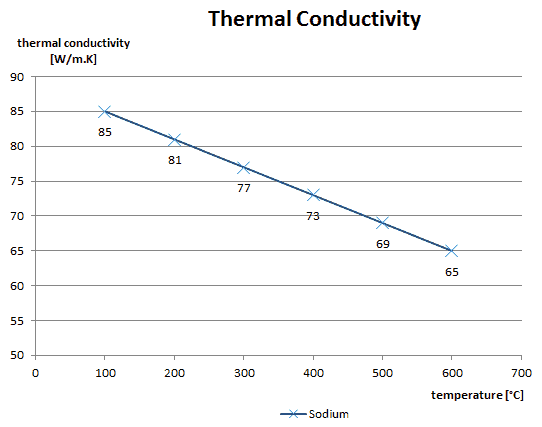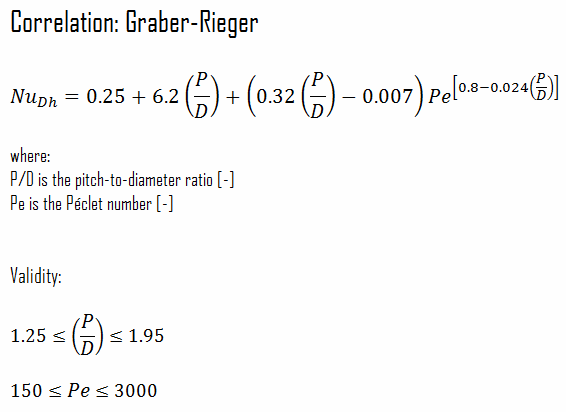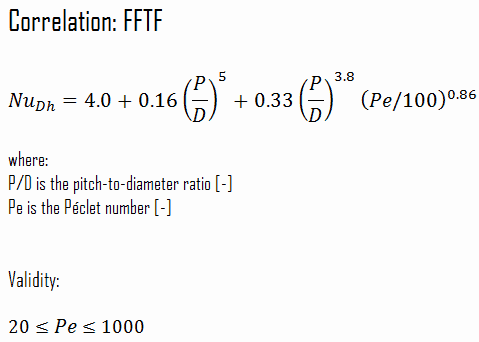A liquid metal cooled reactor is an advanced type of nuclear reactor where the primary coolant is a liquid metal. Liquid metals can be used as a coolant because they have excellent heat transfer properties and can be employed in low-pressure systems, as is the case of sodium-cooled fast reactors (SFRs). The unique feature of metals as far as their structure is concerned is the presence of charge carriers, specifically free electrons, giving them high electrical conductivity high thermal conductivity. This very high thermal conductivity together with low viscosity causes, that typical heat transfer correlations (e.g., Dittus-Boelter) can not be used.
Heat transfer coefficients for sodium flow through the fuel channel are based on the Prandtl number and Péclet number. Pitch-to-diameter (P/D) also enters many heat transfer calculations in liquid metal reactors. Convective heat transfer correlations are usually presented in terms of Nusselt number versus Péclet number. Typical Péclet numbers for normal operation are from 150 to 300 in the fuel bundles. As for other flow regimes, the Nusselt number and a given correlation can be used to determine the convective heat transfer coefficient.


